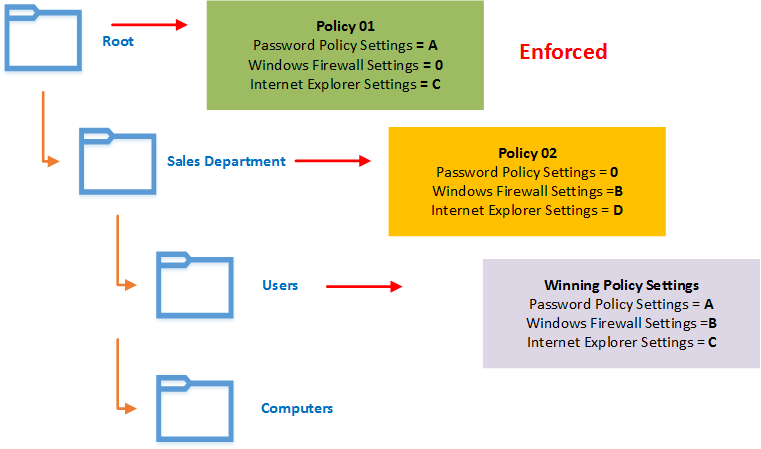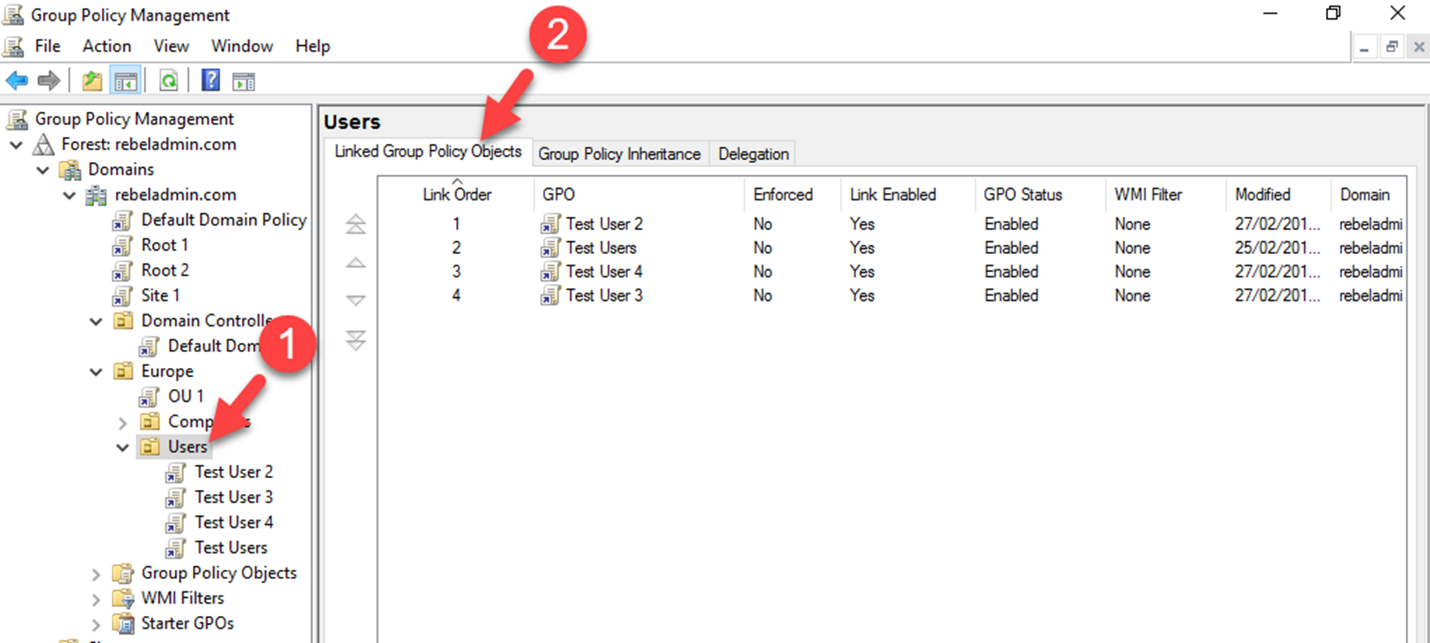In an organization, there can be many group policies in used. Sometime multiple policies may target same thing. In that case it is important to understand which policy going to win. Group Polices precedence order LSDOU and Group Policy Inheritance decides which policy will win in Active Directory structure. Let’s look in to this further with an example,
As per above figure we have two policies inherited to “Users” OU. Policy 01 is Domain linked group policy. Policy 02 is OU linked group policy. Each of the group policy have its own values defined for the three selected settings. Based on the default group policy inheritance, Users OU will have both policies applied. According to LSDOU, Policy 02 will have lowest precedence valve as it is the closest policy for the Users OU. For Password Policy Settings, only Policy 01 has a valve defined. There for even it’s the least preferred group policy, that valve will apply to Users OU. For Windows Firewall Settings, only Policy 02 has a valve. It will also apply to the Users OU. When it comes to the Internet Explorer Settings both policies have values. That makes a conflict. The winning valve of conflicting policy settings will be decided based on LSDOU. There for the wining valve will be from Policy 02.
Microsoft allows to change this default policy winning procedure by enforcing policies. When group policy been enforced, it will have the lowest precedence valve regardless where it’s been linked. Another advantage of the enforced policy is, it will apply even OU is blocked inheritance. If domain linked policy been enforced, it will apply to any OU under the domain and it will hold the lowest precedence. If multiple policies been enforced, all of them will take the lowest precedence numbers in order.
To enforced a policy, load GPMC, right click on the selected group policy and then select “Enforced” option. It will enforce the policy and, change the policy icon with small padlock mark. It allows to identify enforced policies quickly from policy list.
In above example, Policy 01 been enforced. It is domain linked group policy. In normal circumstances Policy 02 will gets a lowest precedence value when its applies to the Users OU. But when policy been enforced Policy 01 will have the lowest precedence valve. When we look in to winning policy values of the Users OU, For Password Policy Settings it will process the Policy 01 value as it is the only one have value for it. For Windows Firewall Settings, Policy 01 do not have any value defined. So even its been enforced the winning policy setting will be from Policy 02 as it’s the only one have a valve defined. Policy 01 and Policy 02 both have values for Internet Explorer Settings. But enforced Policy 01 is in top of the policy list and winning policy setting will be from it.
So far, we talked about conflicting policy settings from different level on domain structure. How it will work if it’s in same level? Policies in same level also apply according to precedence order. When policies are in same level the LSDOU process is no use. The winning policy will decide based on its position in the policy list. The order of the list decided based on “Linked Group Policy Objects” list. This list can view using the Linked Group Policy Objects tab in the OU detail window in GPMC.
The order of policy in same level can be change using two methods. One method is to enforced the policy. When policy is enforced, it will take the priority from the other policies in the same level. but it will not change the “Link Order” of the policy. The order of the list can change using the up and down buttons in the Linked Group Policy Objects Tab. Link order will match the precedence order of the group policies.
This marks the end of this blog post. Hope this was useful. If you have any questions feel free to contact me on rebeladm@live.com also follow me on twitter @rebeladm to get updates about new blog posts.






